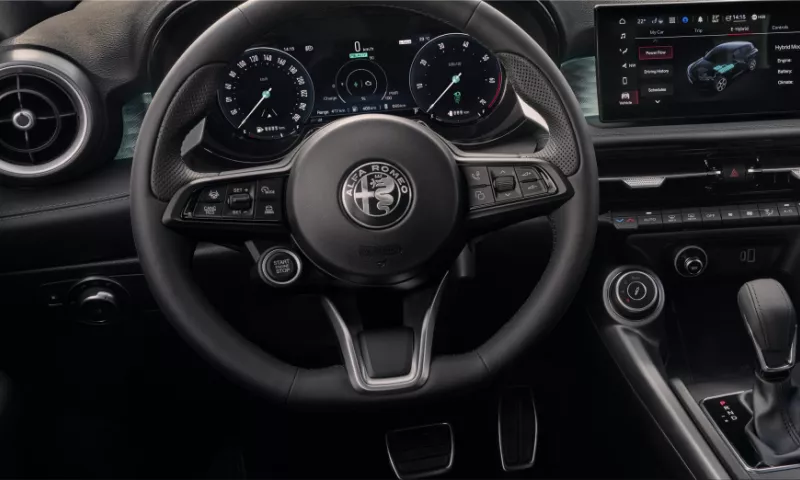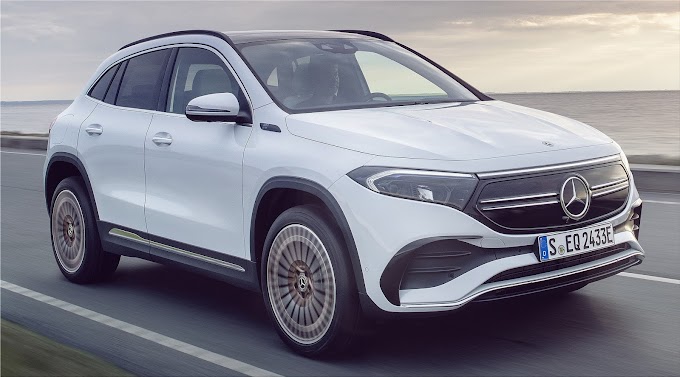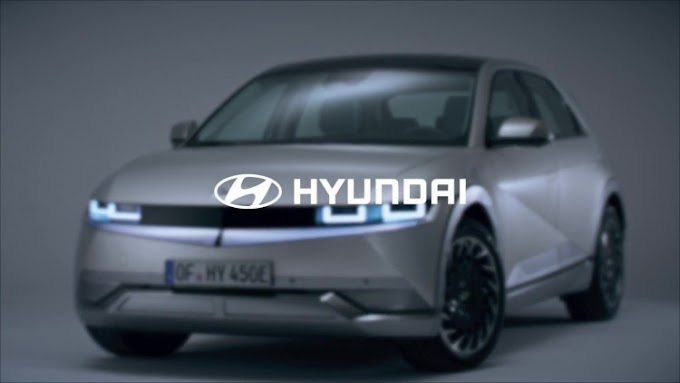The symbol, called Quadrifoglio in Italian, is still used today, for example, by the Alfa Romeo Formula 1 team. And 60 years ago, the Autodelta company was founded, which shortly afterward became the official racing department of Alfa Romeo. Autodelta achieved countless successes until the 1980s, especially in touring car racing and endurance racing. Both events are milestones in Alfa Romeo's history, which began in 1910. For the occasion, Centro Stile Alfa Romeo has designed two special logos,
The two new logos reinterpret the historic graphics of the Quadrifoglio and Autodelta. The color scheme of the new Quadrifoglio logo has been modernized. The new version of the Autodelta logo is now more contemporary and is adapted to Alfa Romeo's current means of communication. Added features are the colors of the Italian flag and the anniversary date.
On the occasion of Autodelta's birthday, Alfa Romeo is holding a theme day on March 5, 2023, exactly 60 years after it was founded, in the factory museum in the Milan suburb of Arese. A "Day of the Quadrifoglio" will also take place there on June 25, 2023, as part of the general birthday celebration of the Alfa Romeo brand. Among other things, the program offers visitors a behind-the-scenes look at the museum and invites members of the Alfa Romeo brand clubs to participate in a vehicle parade on the on-site test track.

Technologies and processes developed in racing transferred to production vehicles - the philosophy for which the Quadrifoglio stands in the world of Alfa Romeo. For 100 years now, the four-leaf clover has characterized the successful factory racing cars from not only Alfa Romeo but also the sportiest and most exclusive production models of the brand.
The extremely superstitious works racing driver Ugo Sivocci had the Quadrifoglio painted on his Alfa Romeo RL Corsa registered for the 1923 Targa Florio – as an antidote to the start number 13 that had been allocated to him. Sivocci won the approximately 430-kilometer race on the narrow mountain roads of Sicily. The Italian thus achieved the first of a total of ten victories for Alfa Romeo at the Targa Florio.
This is how the Quadrifoglio became the lucky charm of the Alfa Romeo works team. The logo was also emblazoned on the Tipo P2, with which Alfa Romeo contested the 1925 Grand Prix season. Gastone Brilli-Peri's victory at the Italian Grand Prix in Monza secured Alfa Romeo the title in the inaugural world championship for automobiles. From 1929, the Quadrifoglio was also a distinguishing feature between the vehicles of the official works team and the Alfa Romeo used by Scuderia Ferrari, which instead wore the later world-famous Prancing Horse.
In 1950, the world's most important Grand Prix was combined into the Formula 1 World Championship for the first time. Alfa Romeo once again competed under the sign of the Quadrifoglio. The Italian Alfa Romeo works driver Giuseppe "Nino" Farina secured the first Formula 1 title in history in the Tipo 158 "Alfetta." The following year, his Argentinian teammate Juan Manuel Fangio became Formula 1 world champion in the successor Alfa Romeo Tipo 159.
In the 1960s, the Quadrifoglio and then the triangular logo of Autodelta identified the extremely successful Alfa Romeo Giulia Sprint GTA and GTAm in the European Touring Car Championship. Alfa Romeo also competed in long-distance races with the Tipo 33 sports prototype. In 1975 with the 33 TT12 variant, and in 1977, with the 33 SC 12, Alfa Romeo won two world championship titles. The brand thus achieved a total of five world championships in three different motor racing disciplines.
Throughout the 1980s, Alfa Romeo continued to win European Championship titles, now with the GTV6 coupé, and also returned to Formula 1 after a pause. In 1993 the Quadrifoglio appeared in the German Touring Car Championship (DTM). Italian works driver Nicola Larini in the Alfa Romeo 155 V6 Ti immediately won the drivers' championship against strong local competitors, and Alfa Romeo won the manufacturers' championship. From 1998 Alfa Romeo used the 156 Superturismo model in touring car races. Alfa Romeo's works drivers were European champions four times in a row between 2000 and 2003, and Alfa Romeo also secured three manufacturers' titles.

In 1963, a production vehicle from Alfa Romeo presented the Quadrifoglio for the first time – the Giulia TI Super, which was ready for racing right from the factory. The model established the tradition of honoring particularly powerful or exclusive production vehicles with the four-leaf clover. Some wore the Quadrifoglio as an emblem on the body without it appearing in the official designation: in addition to the Giulia TI Super, for example, also the Giulia Sprint GT Veloce. From the 1980s, Quadrifoglio was used as an official part of the model designation. The addition Verde (green) identified the sports models such as the Alfa Romeo 33 Quadrifoglio Verde or the Alfa Romeo 164 Quadrifoglio Verde.
In addition, over time, the letter Q, an abbreviation for Quadrifoglio, became part of the Alfa Romeo vocabulary, denoting technically advanced solutions. Examples of this are the Alfa Romeo Tonale Plug-in Hybrid Q4 all-wheel drive, which is still available today, and the Q2 self-locking differential. The earlier automatic transmissions Q-System and Q-Tronic also belong to this series.
In 2008 for the Alfa Romeo MiTo and in 2010, for the Alfa Romeo Giulietta, the term Quadrifoglio returned as a designation for an exclusive equipment line. Alfa Romeo is currently offering extremely sporty Quadrifoglio versions of the Giulia and Stelvio models, both of which are powered by a V6 biturbo engine that generates 375 kW (510 hp) from a displacement of 2.9 liters.
On March 5, 1963, Carlo Chiti, who had previously made a name for himself as a racing engineer at Alfa Romeo and Ferrari, and business partner Ludovico Chizzola founded the Auto Delta company in Feletto Umberto, near the north-eastern Italian city of Udine. The company's original purpose, soon to be written as Autodelta, was to develop the Giulia TZ model in cooperation with Alfa Romeo. The coupé, based on a design by Carrozzeria Zagato, used the engine and other mechanical components of the Alfa Romeo Giulia. However, the supporting basis was not a conventional chassis pressed from sheet steel but a tubular space frame. The construction, called Tubolare Zagato in Italian, led to the model designation TZ.
The cooperation developed so well that Alfa Romeo took over Autodelta in 1965 and relocated to Settimo Milanese as the official racing department, which was much closer to Milan than Udine at the time. The most important task for Carlo Chiti, who was appointed General Manager, and his team was to prepare Alfa Romeo's return to racing. Even then, it worked better in an external organization that had its own discretion to quickly make technical and sporting decisions.
In the years that followed, Autodelta produced some of Alfa Romeo's most famous racing car models, including the legendary 1965 Giulia Sprint GTA, which won five European Touring Car Championship titles for brands, dozens of national championships, and hundreds of individual races around the world. In Germany, the Alfa Romeo Giulia Sprint GTA achieved fame by winning three championships from Herbert Schultze and as the first touring car to lap the famous Nordschleife of the Nürburgring in less than ten minutes.
In 1967, Alfa Romeo decided to venture into sports car racing. This category was the most important international motorsport stage, with the 24-hour race in Le Mans (France) as the season's highlight.
Alfa Romeo developed a two-liter naturally aspirated engine prototype, which received the designation Tipo 33/2. The competition premiere was made to measure with a victory in the hill climb in Fléron, Belgium. In 1968, the factory racing cars managed by the Autodelta team won their displacement class at the 24-hour races in Le Mans and Daytona (USA) and at the 1000-kilometer race on the Nürburgring. They even managed a triple victory in the overall ranking at "500 kilometers from Imola" in Italy.
1975 became Autodelta's most successful year. The Tipo 33 TT 12, now with a twelve-cylinder engine and a displacement of three liters, won seven of the nine races of the season and secured Alfa Romeo the title of brand world champion. The Alfa Romeo Tipo 33 SC 12 repeated this success two years later. In the years that followed, Autodelta took over the management of all of Alfa Romeo's sports programs, from the junior racing series Trofeo Alfasud to Formula 1. At the end of the 1982 season, Alfa Romeo withdrew from Grand Prix racing. Carlo Chiti left Autodelta in 1984, and the company was dissolved shortly after that.
The big names behind the wheel of the Alfa Romeo factory team, directed by Autodelta, included Formula 1 world champions Jochen Rindt and Mario Andretti, as well as Jacky Ickx, Andrea de Adamich, Arturo Merzario, Andrea De Cesaris, Bruno Giacomelli, Giorgio Francia, and Jean Pierre Jarier.









